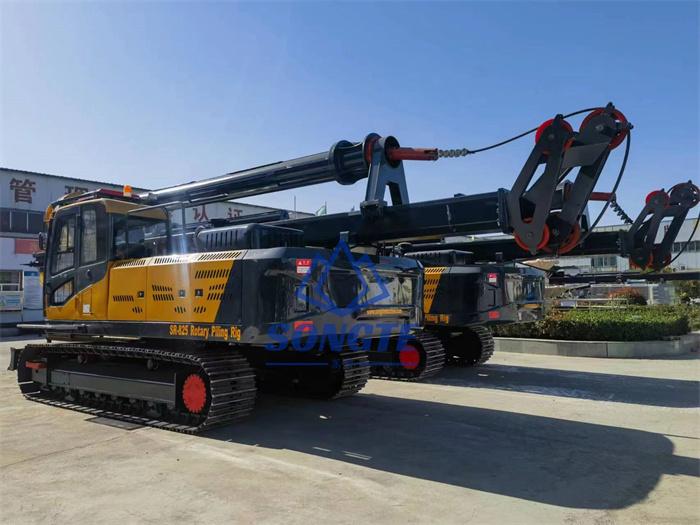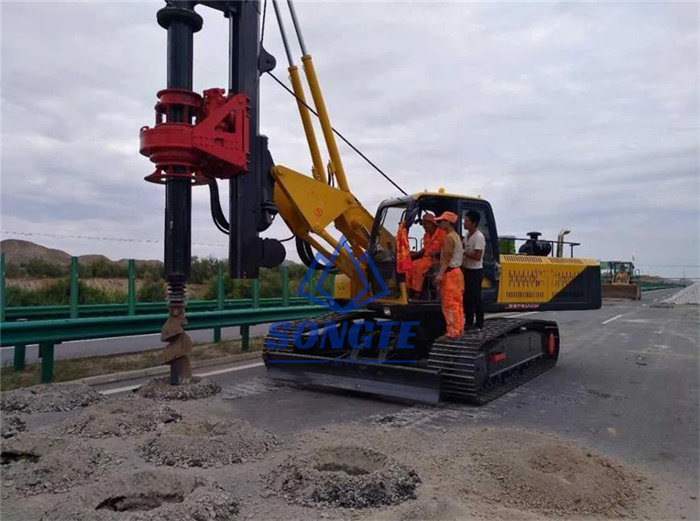How Does a Rotary Piling Rig Work? Unveiling the Mechanism of Rotary Drilling Rigs
Introduction
In the ever-evolving field of construction, understanding the inner workings of specialized machinery is essential for efficient and robust foundation construction. The rotary piling rig, a cornerstone in this process, operates through a sophisticated mechanism that integrates various components. This article aims to elucidate the functionality of a rotary piling rig, offering insights into the intricate world of rotary drilling rigs.
Basic Components of Rotary Drilling Rigs

SR-825 Crawler Type Rotary Drilling Rig For Piles 25m
A rotary piling rig is a powerful piece of machinery designed for the creation of solid foundations. Comprising a variety of components, including a drilling tool, hydraulic system, and control panel, this rig is engineered for versatility and adaptability. The central component, the drilling tool, is pivotal to the rig’s functionality, with various types such as augers, buckets, or core barrels, chosen based on specific project requirements.
Rotary Drilling Process
At the core of a rotary piling rig’s operation is the rotary drilling process. This method involves the rotation of the drilling tool at the rig’s end, enabling it to penetrate the ground. As the tool rotates, it excavates the soil, creating a borehole. This process is fundamental to establishing the groundwork for a stable foundation.
Pile Installation Techniques
The drilling process is complemented by pile installation techniques, which vary based on project specifications. Once the borehole reaches the desired depth, the rotary piling rig withdraws, and concrete is poured into the hole. This results in the formation of a pile, a robust structural element that supports the load of the building or infrastructure above.
Adaptability in Piling Methods
One of the standout features of rotary drilling rigs is their adaptability to various piling methods. Whether the project calls for bored piles, secant piles, or soil displacement piles, a well-equipped rotary piling rig can seamlessly switch between methods, showcasing its versatility in meeting diverse construction needs.

Advanced Technology and Automation
Modern rotary piling rigs incorporate advanced technology and automation, enhancing their precision and efficiency. Computerized control systems monitor and regulate the drilling process in real-time, ensuring that the piles are installed according to engineering specifications. This level of automation minimizes errors and optimizes the overall construction process.
Conclusion
In conclusion, a rotary piling rig operates as a sophisticated ensemble of components, each playing a crucial role in the foundation construction process. The integration of advanced technology, adaptability to various piling methods, and precision in drilling make rotary drilling rigs indispensable in the construction industry. As projects continue to demand efficient and reliable foundation solutions, rotary piling rigs will undoubtedly remain at the forefront of construction technology, contributing to the stability and durability of structures worldwide.
 songtemachine
songtemachine
